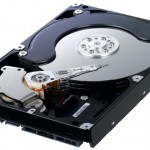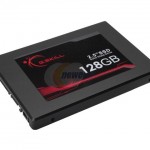SSDs: The Next Big Thing?
The good old hard disk drive has been around forever now. And you can tell they’ve been around a long time because in essence, they’re still largely mechanical devices. They run hot, they are noisy and they can break through prolonged usage. And they’re fragile too. Recent improvements in hard disk technology has meant quieter, more shock resistant drives, but you still can’t go past having platters, read heads, long seek times and the many limitations of a mechanical device.
So that’s the alternative? The good news is that the alternative is already here and available: SSDs. SSDs stand for Solid State Drives, and in modern usage, they basically refer to hard-drives that use flash memory chips as opposed to magnetic surfaces to store data. There are lots of technical stuff related to SSDs, such as the two main type of SSds (SLC and MLC – SLC stores bits in the familiar one bit per cell fashion, whereas MLC stores two bits per cell to double storage as the expense of write speed), but we won’t go into these technical details. Instead, this blog will examine whether SSDs can compete with the current range of cheap and TB sized HDDs (for the purpose of this blog, HDDs will refer to standard magnetic mechanical drives), listing the advantages and disadvantages of either format.
Form Factor:
SSDs now come in 2.5″ and 3.5″ varieties just like hard-drives, and they employ the familiar SATA interface. So fitting one into your PC won’t be a problem.
Read Speed:
SSDs employ parallel architecture to improve read speeds. Typical read speed (such as for the Intel X25-M drive) is around 200 MB/s, often going up to 250 MB/s. A typical hard-drive would be around 100 MB/s for sequential reads. HDDs will actually transfer files at slower speeds depending on where the files are located (for example, inner and outer edges of platters) and how they are fragmented. SSDs do not suffer from this problem, when it claims to have xxx MB/s, then that’s not dependent on file location and fragmentation.
Update: Having read a few more reviews, including some more recent ones with real world tests as opposed to numbers published in specifications, I have revised the read speed ratings below to better reflect real world stats. HDDs tend to have more stable read speeds between models as it is a more mature technology, whereas with SSDs, the range tend to differ more. But read speed is still heavily in favour of SSDs, even if you take the lower end MLC SSD read results. Note that the high end HDD results are for high performance drives such as the WD VelociRaptor range.
HDDs: 60 – 100 MB/s
SSDs: 90 – 180 MB/s (up to 250 MB/s for SLC drives)
Seek Times:
The lack of mechanical servos and reading arms means that seek times are much improved. A typical SSD has a random seek time of around 80 microseconds. A typical HDD will has a seek time of around 14 milliseconds. 1 millisecond equals 1000 microseconds, so seek times for SSDs are actually around 175 times faster. And again, because there are no physical and mechanical limitations, the seek time is not dependent on file location and fragmentation.
HDDs: 14 ms (14,000 microseconds)
SSDs: 80 microseconds
Write Speed:
As mentioned before, there are two types of SSDs: SLC and MLC. MLC has slower write speed, but by “slower” it is still about the same as your typical hard-drive. SLCs will write faster, at more than 160 MB/s, around double that of your typical hard-drive. Again with seek time and read speed, location and fragmentation aren’t issues.
Update: Similar to the read speed update above, write speeds for SSDs differ much more between models, and there are some very low results when compared to even the cheapest HDDs, as there are really high results compared to even the most expensive HDDs. Typically, SLC drives still easily destroys the performance of any HDDs, but they will also destroy your savings as well.
HDDs: 50 – 90 MB/s
SSDs: 45 – 120 MB/s (up to 160 MB/s for SLC drives)
Power Requirements:
Another advantage of non mechanical drives is the reduction in power requirements and heat. A typical hard-drive draws around 8W of power even when idle, whereas your typical SSD only uses less than a single watt even under heavy use. This makes SSDs perfect for portable computing needs, where both power and heat can be problems. Noise is all but eliminated as well.
HDDs: 8W when idle
SSDs: 1W under heavy use
Durability:
By taking the possibility of mechanical failure and losing magnetic cohesion from the equation, SSDs can be even more durable than standard HDDs. A typical HDD has a MTBF (mean time between failure) of about 136 years (plenty for mere mortals). A MLC type SSD has about the same MTBF, and the SLC type is even better at almost double this (around 228 years, for the Intel X25-M). SSDs are also better able to handle being physically abused as there are no delicate mechanical parts that are a drop away from being damaged permanently. And when SSDs do fail, it will be the write that fails first (read will still work)), so you can still retrieve your data while you seek a new drive, unlike HDDs that can fail and take away all your data almost instantly.
Capacity and Cost:
So far, SSDs are taking HDDs for a ride in every aspect. So why aren’t we using SSDs? The reason is the two C’s: capacity and cost. Do an online search for SSDs, and the sizes you are likely to see are still in the GBs, as opposed to TBs. 256 GB is considered large for commercial SSD drives, while HDDs are now considered small even at 4 times this. As for cost, you will be paying through the nose for SSDs, even at small sizes. A quick search over at Newegg.com reveals that a 256 GB SSD costs $619. That works out to be around $2.40 per GB. A Seagate 1.5 TB HDD, in comparison, costs only $129, or $0.09 per GB. This means that SSDs are currently28 times more expensive than HDDs, while offering much less space per drive. Even if you take even lower capacity SSDs (which are cheaper per GB), that cost is still around $2.00 per GB, or 20 times more expensive.
HDDs: 1 TB at under 10 cents per GB
SSDs: 128 GB at around $2.00 per GB
So there you have it. SSDs pretty much beat HDDs at everything, except capacity and cost. But the good news is that these two C’s are the areas that SSDs will improve at an exponential rate. Competition in this sector will be fierce due to a large number of companies being able to produce SSDs – RAM and flash drive producers will join existing HDD manufacturers in producing SSD drives. This should help ensure prices drop at an even faster rate. Note that you have to look carefully to buy the right SSD as not all SSDs are equal (see updated notes for read/write speed entries). This is another weak point of SSDs, in that the technology is still maturing. The Intel X-25E, being a SLC drive, is the top performer at the moment. But for better value, something like the OCZ 120 GB MLC SSD drive will offer superior read and write speeds to all HDDs, and costs much less than SLC drives. But it is still way too expensive compared to even the most expensive HDDs, even if you don’t take into account the capacity shortage.
So while it is a bit unrealistic to think people are able to replace HDDs with SSDs at this moment, there is no reason to think that SSDs won’t replace HDDs in the short the mid term. My prediction is that by this time next year, many mid and top end PCs will come with SSD storage, perhaps complimented by larger HDDs for media storage. Portable computers will quickly employ SSDs over the rest of this year, with perhaps cheaper netbooks coming with them as standard due to the benefits of battery times outweighing the extra cost. And in two year’s time, the humble magnetic HDD that has served us so well may very well be a memory of the past as SSDs take over the market completely. I, for one, can’t wait.



June 7th, 2009 at 5:42 pm
[…] DVDGuy’s Blog @ Digital Digest Just what the world needs, another blog « SSDs: The Next Big Thing? […]
June 8th, 2009 at 10:58 am
What SSD drive has a 160MB/s WRITE speed????? That is much faster than any drive I have seen on the market so far. Write speeds I have seen are typically worse than HD’s.
June 8th, 2009 at 2:09 pm
MLC SSDs have around the same write speed as HDDs (note that SSD read/write speeds are more consistent, whereas HDD transfer speeds are dependent on a lot of factors). SLC SSDs (for example, the Intel X25-E) have more than double the write speed of MLC drives – these have *specified* sequential write speeds of up to 170 MB/s. Real world speeds are of course slower than specification, and real world tests are available in this review, which shows that SLC SSDs are about twice as fast as the fastest HDDs.
June 15th, 2009 at 12:51 am
Thanks for the info. The X25-E has certainly overcome the sluggish write performance that is typical of flash memory. The X25-M is a good example of typical sluggish write performance. The only downside for now is the high cost. That should change in time.
June 15th, 2009 at 2:29 am
Yeah, the price and also capacity (which is related to the price) are the major turn offs for SSD at the moment. The lower write speed of MLC drives will be a concern to some, but the massive improvements in seek time and read speed should help in most basic tasks (which tends to involve numerous small file reads and writes).
June 16th, 2009 at 2:37 pm
I’ve updated the article a bit upon reading some more recent real world results for SSDs. Read and write speeds vary quite a bit between the different SSD models, and some are very pedestrian, while others are better than even the best HDDs. The current best choice in terms of read/write speed, and cost, seems to be the 120 GB MLC drive from OCZ, at $3 per GB it isn’t cheap, but you can expect write speeds in excess of 110 MB/s and read speeds of up to 160 MB/s, compared to say 80-something and 100 MB/s write/read for the fastest HDDs.
July 12th, 2010 at 5:40 pm
[…] Optional – SSDs: I’ve talked about how great SSDs are in the past, prices have dropped, and although still high compared to HDDs, they may just be entering the […]